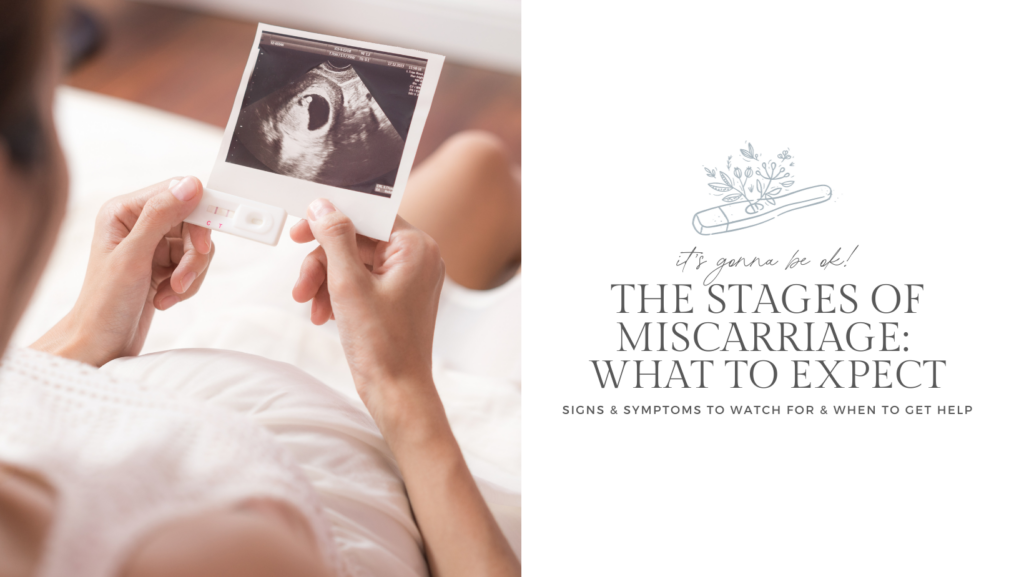
Pregnancy is a rollercoaster of emotions and expectations. However, sometimes, this journey takes an unexpected turn. In this blog post, we’ll delve into the stages of miscarriage, shedding light on the different types, symptoms, and treatment options with a friendly and informative tone. It’s crucial to remember that miscarriages are more common than we might think, with about 10-15% of pregnancies ending in pregnancy loss. Let’s embark on this journey with compassion and understanding.
{We are a participant in the Amazon Services LLC Associates Program, an affiliate advertising program designed to provide a means for us to earn fees by linking to Amazon.com and affiliated sites. To learn more about affiliate links, click here!}

Early Pregnancy and Its Joyful Beginnings
The journey of motherhood often commences with joy, excitement, and anticipation. From the moment you get that positive blood test confirming your pregnancy, you begin to envision a beautiful future. In the first trimester, your body undergoes remarkable changes as the pregnancy progresses. However, it’s also during this period that the risk of miscarriage is at its highest.
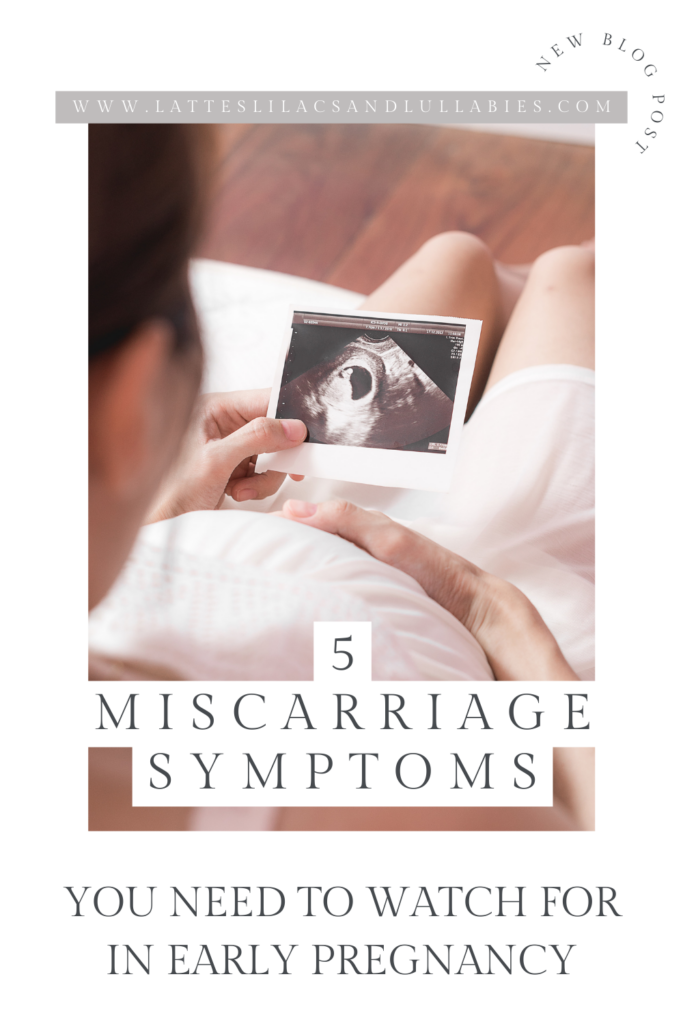
The Delicate Reality of Miscarriage: Recognizing Early Pregnancy Symptoms
Early pregnancy symptoms can be both heartwarming and challenging. Morning sickness, tender breasts, and the glow of expectancy are common companions. However, it’s also during this time that symptoms of a miscarriage may emerge. Vaginal bleeding, abdominal pain, and the passage of blood clots could signal a potential issue.
While each woman’s experience is unique, there are some telltale signs that may indicate you’re expecting. It’s essential to recognize these early pregnancy symptoms as they can be the initial steps on the road to motherhood.
Morning Sickness and Nausea
One of the most iconic early pregnancy symptoms is morning sickness, though, in reality, it can strike at any time of the day. Nausea and vomiting are often the result of hormonal changes, particularly the surge in human chorionic gonadotropin (hCG) levels, which are essential for a healthy pregnancy. While morning sickness can be uncomfortable, it is typically a reassuring sign that your pregnancy is progressing as it should.
Tender Breasts
Hormonal shifts, primarily an increase in estrogen and progesterone, can lead to breast tenderness. Your breasts may become more sensitive and sore as your body prepares for breastfeeding. The changes in blood flow and the development of mammary glands are clear indicators of early pregnancy.
The Glow of Expectancy
Pregnancy hormones can impart a radiant glow to your skin. Many women find that their complexion improves during pregnancy, with their skin becoming smoother and more vibrant. This “pregnancy glow” is attributed to increased blood flow and the hormone-induced changes that support the developing fetus.
Frequent Urination
An often-overlooked early pregnancy symptom is the need to visit the restroom more frequently. As the uterus begins to expand, it exerts pressure on the bladder, leading to a heightened urge to urinate. Frequent urination can start as early as the first few weeks of pregnancy.
Food Aversions and Cravings
Changes in taste and smell are common during pregnancy. You might develop aversions to foods you once loved and suddenly crave items you never found appealing. These aversions and cravings are attributed to hormonal changes and can vary widely from woman to woman.
Vaginal Bleeding: A Cause for Concern?
While many of the early pregnancy symptoms we’ve discussed are generally considered reassuring signs of a healthy pregnancy, vaginal bleeding can be a cause for concern. Vaginal bleeding in the early stages of pregnancy is not uncommon, but it should never be ignored. While it doesn’t always signify a miscarriage, it can be an indicator of a problem. Vaginal bleeding can range from light spotting to heavy bleeding, and its potential causes include implantation bleeding, cervical changes, or, in some cases, early pregnancy loss.
Abdominal Pain and Cramping
Mild abdominal discomfort or cramping is another symptom that some women experience during early pregnancy. This sensation can be similar to menstrual cramps and is often caused by the expanding uterus and ligaments. However, severe or persistent abdominal pain, especially when accompanied by heavy bleeding, could be indicative of a more serious issue, such as an ectopic pregnancy or a potential miscarriage.
Passing Blood Clots: What It May Signify
Seeing blood clots when you’re pregnant can be alarming. The presence of blood clots can indicate a variety of conditions, ranging from harmless to more concerning. Small, non-recurring clots can sometimes be normal and may not pose a threat to the pregnancy. However, passing large clots or experiencing heavy bleeding can be a sign of a potential miscarriage or another issue requiring medical attention.
It’s important to note that not all women experience these symptoms, and the intensity and timing of these signs can vary widely. Additionally, some women may not experience any noticeable early pregnancy symptoms at all, which is entirely normal. The absence of symptoms does not necessarily indicate a problem with the pregnancy.
If you experience vaginal bleeding, heavy bleeding, severe abdominal pain, or any concerning symptoms during the early stages of pregnancy, it is crucial to seek immediate medical attention. These symptoms may indicate a potential issue with the pregnancy, and early diagnosis and treatment can be vital in ensuring the best possible outcome.
Understanding and recognizing these early pregnancy signs is the first step in the journey to motherhood. While they can bring moments of discomfort or concern, they are also a testament to the remarkable changes happening within your body as it prepares to nurture new life. If you ever have doubts or concerns about your pregnancy symptoms, don’t hesitate to consult your healthcare provider for guidance and reassurance.
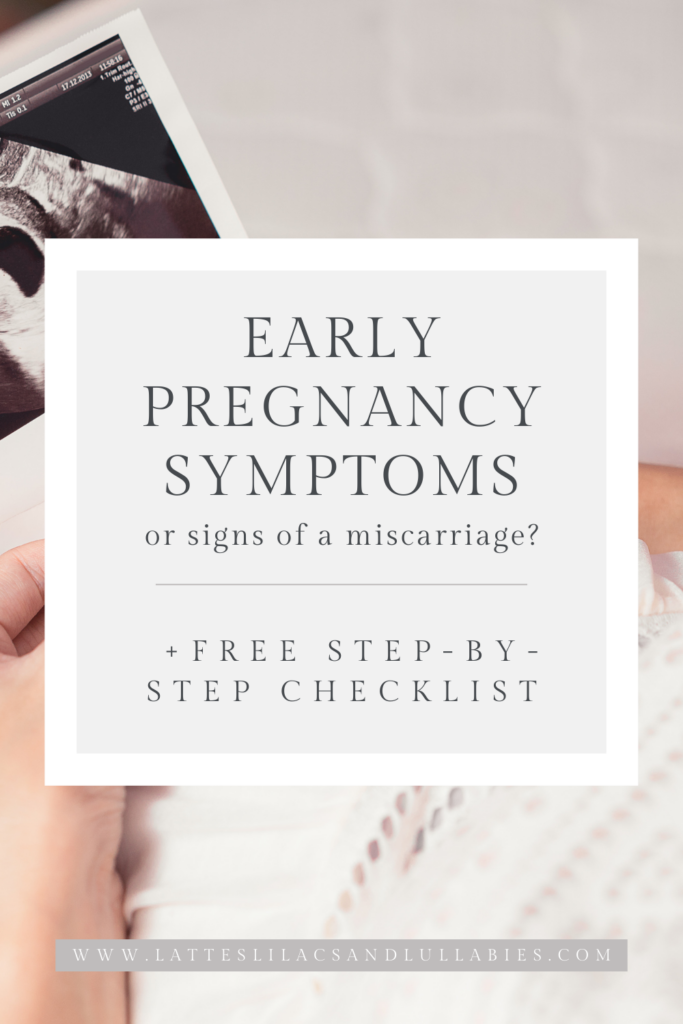
Types of Miscarriage: Early Pregnancy Loss Unveiled
Not all miscarriages are the same. Understanding the types of miscarriage is essential in navigating this challenging journey. The most common type is an early miscarriage, which occurs within the first 12 weeks of pregnancy. These are often attributed to chromosomal abnormalities, where the fetus cannot develop normally.
Missed Miscarriage: A Heart-Wrenching Discovery
A missed miscarriage, also known as a silent miscarriage or missed abortion, is a unique and emotionally challenging experience in the realm of pregnancy loss. It occurs when a developing embryo or fetus has stopped growing, but the woman’s body does not recognize or respond to this, resulting in no immediate symptoms or signs. This can be a deeply heart-wrenching discovery, as it often only becomes apparent during a routine ultrasound or prenatal checkup.
Signs and Symptoms of a Missed Miscarriage
One of the defining features of a missed miscarriage is the absence of typical miscarriage symptoms, such as vaginal bleeding or cramping. This lack of symptoms can make it particularly difficult for expectant parents, who may have been eagerly anticipating the next ultrasound to see their baby’s progress.
- Lack of Fetal Heartbeat: The most common indicator of a missed miscarriage is the absence of a fetal heartbeat during an ultrasound examination. In the first trimester, healthcare providers routinely perform ultrasounds to monitor fetal development. During this scan, if the healthcare provider is unable to detect a heartbeat or signs of fetal growth, it could suggest a missed miscarriage.
- No Fetal Movement: An expectant mother may also notice a decrease in or absence of fetal movement. This absence of activity is often associated with a cessation in fetal development.
- Loss of Pregnancy Symptoms: In some cases, a woman might experience a loss of pregnancy symptoms, such as breast tenderness, nausea, and fatigue. This can be due to the fact that the body is no longer producing hormones to support the pregnancy.
- Emotional Intuition: Intuition can also play a role. Some women report a sense of unease or the feeling that something is wrong, even when there are no visible signs or symptoms. Trusting your instincts and seeking medical evaluation when you feel something is amiss is essential.
Emotional Impact of a Missed Miscarriage
A missed miscarriage is particularly challenging because it often involves a delayed realization of the loss. The emotional impact can be profound, as parents have already had time to bond with the idea of a growing family, and the sudden revelation that the pregnancy has ceased can be devastating.
Grief, confusion, and a range of complex emotions often accompany a missed miscarriage. It’s important for individuals and couples experiencing this type of loss to seek support from healthcare professionals, counselors, and support groups. These resources can provide valuable guidance and help individuals process their feelings.
Diagnosis and Next Steps
When a missed miscarriage is suspected, healthcare providers typically conduct further testing to confirm the diagnosis. This may involve repeat ultrasound examinations, blood tests to measure human chorionic gonadotropin (hCG) levels, or other diagnostic procedures. Once the diagnosis is confirmed, the healthcare provider will discuss treatment options with the parents.
The most common treatments for a missed miscarriage are expectant management and medical or surgical intervention. Expectant management involves allowing the body to naturally expel the pregnancy tissue. This process can take several weeks, during which time symptoms of a miscarriage, such as vaginal bleeding and cramping, may develop. Alternatively, medical intervention may be chosen, where medications are used to initiate the miscarriage process. In some cases, a surgical procedure known as dilation and curettage (D&C) may be recommended to remove any remaining fetal tissue from the uterus.

Ectopic Pregnancy: When Pregnancy Takes a Detour
An ectopic pregnancy, also known as a tubal pregnancy, occurs when a fertilized egg implants and begins to develop outside the uterus, typically in the fallopian tubes. This is a serious and potentially life-threatening condition that requires immediate medical attention. Understanding the signs and symptoms of an ectopic pregnancy is crucial for early diagnosis and intervention.
Signs and Symptoms of Ectopic Pregnancy
Ectopic pregnancies often display symptoms that can be similar to a normal pregnancy, making it challenging to diagnose without medical evaluation. However, there are key signs and symptoms that may indicate the presence of an ectopic pregnancy:
- Abdominal Pain: The most common symptom of an ectopic pregnancy is abdominal pain, often described as sharp or stabbing. This pain is typically focused on one side of the lower abdomen and may come and go or become constant.
- Vaginal Bleeding: Vaginal bleeding, which can range from light spotting to heavy bleeding, is a common symptom. This bleeding may be accompanied by abdominal pain.
- Shoulder Pain: Shoulder pain, particularly on one side, can be a less common but concerning symptom. This occurs when there is internal bleeding, and blood irritates the diaphragm, causing referred pain in the shoulder area.
- Pelvic Pain: Pain in the pelvic area, often on one side, may occur and can be mistaken for menstrual cramps. This pain can gradually worsen.
- Weakness or Fainting: Internal bleeding from an ectopic pregnancy can lead to a drop in blood pressure, causing weakness, dizziness, and, in severe cases, fainting.
- Gastrointestinal Symptoms: Some women may experience gastrointestinal symptoms such as nausea, vomiting, and diarrhea.
Risk Factors for Ectopic Pregnancy
While ectopic pregnancies can happen to any woman, several risk factors increase the likelihood of this condition:
- Previous Ectopic Pregnancy: If you’ve had an ectopic pregnancy before, your risk for another one is higher.
- Pelvic Inflammatory Disease (PID): Infections or inflammation in the reproductive organs can increase the risk.
- Tubal Surgery: Any surgery on the fallopian tubes can raise the risk of an ectopic pregnancy.
- Use of Intrauterine Devices (IUDs): Although rare, ectopic pregnancies can occur while using IUDs.
- Smoking: Smoking is associated with an increased risk of ectopic pregnancy.
- Fertility Treatments: Women undergoing fertility treatments, particularly in vitro fertilization (IVF), have a higher risk.
Diagnosis and Treatment
Early diagnosis of an ectopic pregnancy is crucial to prevent complications. Healthcare providers typically use a combination of methods to diagnose ectopic pregnancies, including transvaginal ultrasound and blood tests to monitor human chorionic gonadotropin (hCG) levels.
Once an ectopic pregnancy is confirmed, immediate treatment is necessary. There are two primary treatment options:
- Medication: In some cases, a medication called methotrexate may be used to halt the growth of the embryo, allowing the body to naturally absorb it. This approach is often considered for early ectopic pregnancies without significant bleeding or pain.
- Surgical Intervention: When the fallopian tube is at risk of rupture or has already ruptured, surgery is necessary to remove the ectopic pregnancy. The surgeon may remove the affected tube in cases of severe damage.
Ectopic pregnancies are a serious condition that can pose a significant risk to a woman’s health and fertility. Early diagnosis and prompt medical intervention are crucial to ensure the best possible outcome. Understanding the signs and risk factors for ectopic pregnancy is essential for all women, as this condition can occur in any pregnancy. If you suspect you may have an ectopic pregnancy or experience symptoms such as abdominal pain, vaginal bleeding, or shoulder pain, seek immediate medical attention.

Blighted Ovum
A blighted ovum, medically referred to as anembryonic gestation, is a somewhat perplexing yet not uncommon occurrence in early pregnancy. To understand it better, let’s delve into the specifics of what a blighted ovum is and what it means for a pregnancy.
What Is a Blighted Ovum?
A blighted ovum occurs when a fertilized egg attaches itself to the uterine wall and starts to develop into a gestational sac, but an embryo never forms. Essentially, it’s a situation where the pregnancy sac (the gestational sac) develops normally, but the embryo, which would eventually become the fetus, does not develop or ceases to develop very early in pregnancy.
Causes of a Blighted Ovum
The exact causes of a blighted ovum are not always clear, but they can be attributed to various factors, including chromosomal abnormalities, hormonal imbalances, or problems with the development of the fertilized egg. Sometimes, it’s just a result of nature’s way of preventing pregnancies that wouldn’t be viable.
Symptoms of a Blighted Ovum
One of the most challenging aspects of a blighted ovum is that it often doesn’t present with any noticeable symptoms in the early stages. In the early weeks of pregnancy, you might experience typical pregnancy symptoms, such as breast tenderness, nausea, and a positive pregnancy test. However, as the weeks progress, you may notice that these symptoms start to fade or never become as pronounced as you expected. You might also experience mild spotting or bleeding.
As the pregnancy advances, an ultrasound will typically reveal the absence of an embryo within the gestational sac. This is when the diagnosis of a blighted ovum is typically made. Your healthcare provider may want to confirm the diagnosis through additional ultrasounds to ensure accuracy.
Emotional Impact of a Blighted Ovum
A blighted ovum can be an emotionally trying experience for expectant parents. It’s often referred to as a “silent miscarriage” because, similar to a missed miscarriage, there are no physical symptoms that signal the loss. Discovering that the pregnancy you were excitedly anticipating isn’t viable can be deeply distressing and may lead to feelings of grief and loss.
Treatment for a Blighted Ovum
In most cases, a blighted ovum is not viable and will not develop into a healthy pregnancy. Your healthcare provider will discuss treatment options with you, which may include:
- Expectant Management: Allowing the body to naturally miscarry the pregnancy, a process that can take some time. This method may involve symptoms of a miscarriage, such as vaginal bleeding and cramping.
- Medication: In some cases, medication may be used to help your body expel the pregnancy tissue.
- Surgical Procedure: If necessary, a surgical procedure, such as dilation and curettage (D&C), may be performed to remove the pregnancy tissue from the uterus.

The Stages of Miscarriage: What to Expect
Understanding the stages of a miscarriage is essential for expectant parents, as it can help them navigate this challenging journey. Each experience is unique, but there are common stages that many women go through when facing a miscarriage.
Initial Symptoms
The journey of a miscarriage often begins with the first signs and symptoms that something may not be right. These initial symptoms can vary from woman to woman, but they may include:
- Vaginal Bleeding: The most common and noticeable early sign of a miscarriage is vaginal bleeding. This bleeding can range from light spotting to heavy bleeding and is often accompanied by abdominal cramping. The presence of blood clots in the vaginal discharge can also be a distressing symptom.
- Abdominal Pain: Many women experience abdominal pain or cramping, which can range from mild to severe. This pain is often similar to menstrual cramps and can be persistent or come in waves.
- Loss of Pregnancy Symptoms: As the miscarriage progresses, you may notice a decline or loss of pregnancy symptoms such as breast tenderness, nausea, and fatigue. This can be particularly distressing as it may feel like a loss of connection to the pregnancy.
Confirmation through Medical Tests
Upon experiencing these initial symptoms, expectant parents often seek medical evaluation to confirm the status of the pregnancy. Healthcare providers use various methods to determine if a miscarriage has occurred or is in progress:
- Transvaginal Ultrasound: A transvaginal ultrasound is a common diagnostic tool that allows healthcare providers to visualize the inside of the uterus. In early pregnancy, this test can confirm whether the fetus is developing as expected and whether there is a heartbeat. If the ultrasound shows an empty gestational sac or no fetal heartbeat, it may indicate a miscarriage.
- Blood Tests: Blood tests, specifically those measuring human chorionic gonadotropin (hCG) levels, can provide information about the progress of the pregnancy. Falling or plateauing hCG levels may be indicative of a miscarriage.
- Physical Examination: A healthcare provider may perform a physical examination and inquire about your symptoms and medical history to help assess the likelihood of a miscarriage.
Once a miscarriage is confirmed, your healthcare provider will discuss your options for managing the process and provide guidance on treatment choices.
The Emotional Aftermath
The emotional aftermath of a miscarriage can be one of the most challenging aspects of this experience. Each person’s journey through grief is unique, but there are common emotions and stages that many people go through:
- Shock and Denial: Initially, it can be challenging to accept the reality of a miscarriage. You might feel a sense of shock and disbelief.
- Grief and Sadness: As the reality sets in, you may experience deep grief and sadness. It’s normal to mourn the loss of the pregnancy and the dreams you had for your child.
- Anger and Guilt: It’s not uncommon to feel anger or guilt. You might question whether you did something to cause the miscarriage, even though it’s rarely the result of anything you did or didn’t do.
- Acceptance and Healing: Over time, most people find a path toward acceptance and healing. This doesn’t mean forgetting the experience but rather learning to live with it and find ways to cope.
- Seeking Support: Many individuals and couples find solace in seeking support from healthcare providers, counselors, and support groups. Sharing your feelings and experiences with others who have gone through similar losses can be immensely helpful.
The stages of a miscarriage, from initial symptoms to confirmation and the emotional aftermath, can be a complex and deeply personal journey. It’s important to remember that you are not alone, and there is a community of support waiting to help you through this challenging time. The grief and healing process takes time, but with understanding and support, you can navigate this journey with care and compassion.
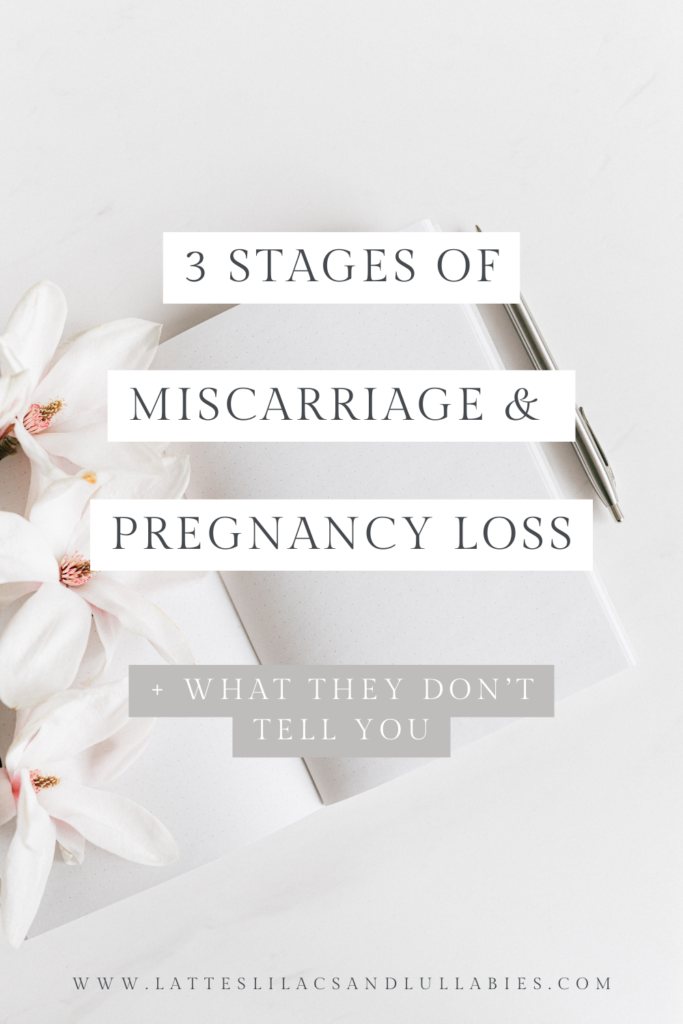
Diagnosis and Treatment Options
Diagnosing a miscarriage is a delicate and vital process that involves a combination of medical evaluation and diagnostic procedures. Understanding how healthcare providers diagnose a miscarriage is essential for those who are experiencing symptoms or concerns related to a pregnancy.
Medical History and Symptoms Assessment
The diagnostic journey often begins with a healthcare provider conducting a thorough medical history and symptoms assessment. During this discussion, you may be asked about the following:
- Symptoms: Your healthcare provider will inquire about any symptoms you are experiencing, such as vaginal bleeding, abdominal pain, or a decline in pregnancy-related symptoms like breast tenderness or nausea.
- Menstrual History: Information about your menstrual cycles, including the date of your last menstrual period, is crucial for estimating the gestational age of the pregnancy.
- Medical Conditions and Medications: Your healthcare provider may ask about any preexisting medical conditions, medications you’re taking, or any previous pregnancies and their outcomes.
Physical Examination
A physical examination is often conducted to assess your overall health and gather information that may be relevant to the diagnosis of a miscarriage. This examination may include:
- Pelvic Examination: A pelvic examination allows the healthcare provider to check for any abnormalities in the uterus or cervix and to evaluate the extent of any vaginal bleeding.
- Blood Pressure and Pulse: Monitoring vital signs can help determine if you are experiencing any signs of shock, which can occur in cases of severe bleeding.
Ultrasound Examination
One of the most crucial diagnostic tools for miscarriage is an ultrasound examination. There are two main types of ultrasounds used in this context:
- Transvaginal Ultrasound: This type of ultrasound involves inserting a small probe into the vagina to provide a close-up view of the pelvic area. It can detect the presence of a gestational sac, the embryo, and the fetal heartbeat, providing essential information about the pregnancy’s viability.
- Abdominal Ultrasound: Abdominal ultrasounds are conducted externally on the abdomen. While they can provide a general view of the pelvic region, they may not be as effective in the early stages of pregnancy.
Based on the ultrasound findings, there are several possible outcomes:
- Viable Pregnancy: If the ultrasound shows a gestational sac, embryo, and a visible fetal heartbeat, the pregnancy is considered viable, and the diagnosis is not a miscarriage.
- Incomplete Miscarriage: An ultrasound may reveal an incomplete miscarriage, where some fetal tissue remains in the uterus.
- Missed Miscarriage: A missed miscarriage is diagnosed if the ultrasound shows a gestational sac but no fetal heartbeat or embryo, indicating that the pregnancy has ceased to develop.
- Complete Miscarriage: In a complete miscarriage, the ultrasound will show an empty uterus, meaning that the body has naturally passed all pregnancy tissue.
Blood Tests
Blood tests, specifically those measuring human chorionic gonadotropin (hCG) levels, can be employed to complement the diagnostic process. The hCG levels are usually monitored with multiple blood tests, taken 48 hours apart. In a normal, progressing pregnancy, hCG levels should increase approximately every 48-72 hours. A lack of or declining hCG levels can be indicative of a miscarriage.
Biopsy or Pathological Examination
In some cases, if a miscarriage is incomplete or there are concerns about the pregnancy tissue, a biopsy or pathological examination may be recommended. This involves analyzing the tissue that is passed or removed during a miscarriage to confirm the diagnosis and assess the cause.
The diagnosis of a miscarriage is a comprehensive process that combines medical history, symptoms assessment, physical examination, ultrasound evaluation, blood tests, and, if needed, biopsy or pathological examination. It’s a sensitive journey that healthcare providers undertake with care and empathy to provide individuals and couples with the information and support they need during this challenging time.
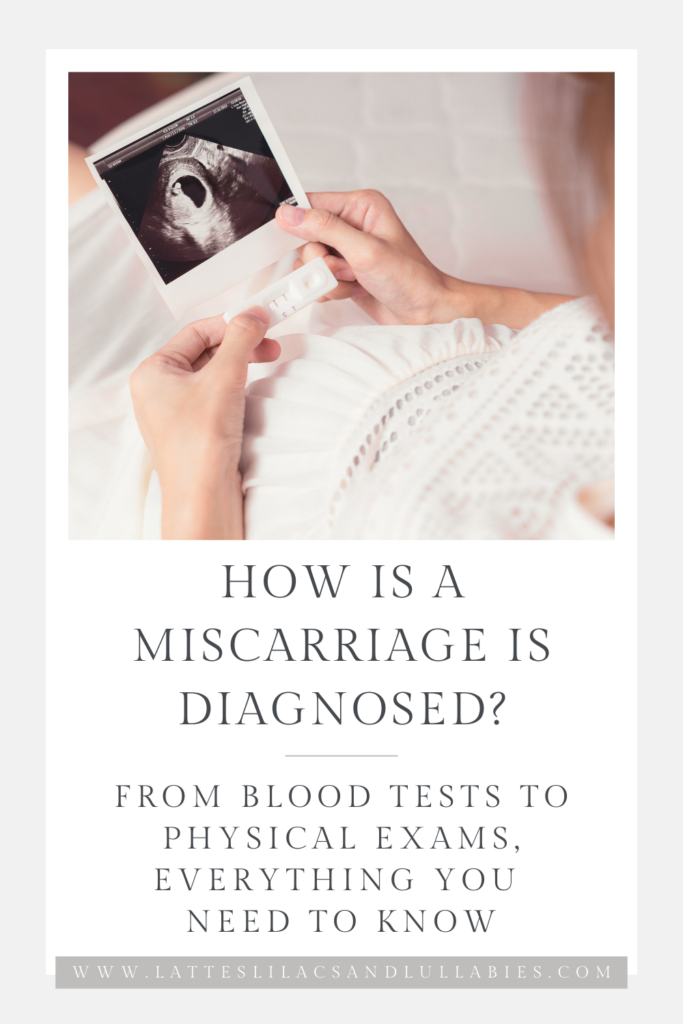
Expectant Management and Surgical Procedures
After a miscarriage is diagnosed, you’ll have treatment options to consider. One approach is expectant management, which allows the body to naturally expel the pregnancy tissue. This process can take several weeks, and during this time, you may experience heavy bleeding and pass blood clots. Alternatively, a surgical procedure, such as dilation and curettage (D&C), may be recommended to remove any remaining fetal tissue.
Expectant management, also known as watchful waiting, is one of the approaches to managing a miscarriage. It involves allowing the body to naturally expel the pregnancy tissue without medical or surgical intervention. This method is suitable for some cases of miscarriage, but it is essential to understand the process, potential risks, and the emotional aspects of expectant management.
Indications for Expectant Management
Expectant management is typically considered in the following situations:
- Incomplete Miscarriage: When the miscarriage has started, but not all the pregnancy tissue has been passed, expectant management may be recommended to allow the body to complete the process naturally.
- Miscarriage with Minimal Symptoms: In some cases, a miscarriage may be diagnosed early in the first trimester, and the individual may have only minimal symptoms such as light bleeding. Expectant management may be an option when the healthcare provider believes that the body will naturally expel the remaining tissue.
The Process of Expectant Management
Expectant management involves waiting for the body to complete the process of miscarriage. Here’s what you can expect during this period:
- Monitoring Symptoms: You will be advised to monitor your symptoms carefully. This includes observing the amount and color of vaginal bleeding, as well as any changes in pain or discomfort.
- Time Frame: The process can take several days to a few weeks, and the duration can vary widely from person to person. It’s essential to be patient and allow the body to work at its own pace.
- Possible Symptoms: During expectant management, you may experience symptoms such as vaginal bleeding and abdominal cramping. It’s not unusual to pass blood clots or pregnancy tissue during this process.
- Follow-up Appointments: Your healthcare provider will schedule follow-up appointments to monitor your progress. These appointments may include ultrasounds or blood tests to ensure that the miscarriage is progressing as expected.
Risks and Considerations
While expectant management is a valid option in some cases, it’s important to be aware of the potential risks and considerations:
- Pain and Discomfort: The process of natural miscarriage can be uncomfortable and may involve moderate to severe abdominal cramping. Pain management options may be discussed with your healthcare provider.
- Emotional Impact: Waiting for the body to naturally expel pregnancy tissue can be emotionally challenging, as it prolongs the grieving process. Expectant management may not be suitable for individuals who find it difficult to cope with the emotional aspects of the process.
- Incomplete Miscarriage: In some cases, expectant management may not result in the complete expulsion of pregnancy tissue. If this occurs, you may require further medical or surgical intervention to complete the miscarriage.
When to Seek Immediate Medical Attention
It’s crucial to be aware of the signs and symptoms that may indicate complications during expectant management. Seek immediate medical attention if you experience:
- Excessive or heavy bleeding: If you soak through more than one sanitary pad per hour for several hours, it may indicate a hemorrhage and requires immediate attention.
- Severe pain: If the pain becomes unbearable or does not respond to pain management measures, consult your healthcare provider.
- Fever or chills: These symptoms can be indicative of infection and require prompt medical evaluation.
Expectant management is one of the options for managing a miscarriage, and it can be a suitable choice for some individuals. It’s important to discuss the pros and cons of this approach with your healthcare provider to determine the best course of action for your specific situation. Throughout the process, emotional support is crucial, and seeking counseling or joining a support group can help you cope with the challenges of expectant management and the grief associated with pregnancy loss.
Surgical treatment for miscarriage, also known as a dilation and curettage (D&C), is a medical procedure that is sometimes recommended when a miscarriage has occurred or is incomplete. Understanding this surgical intervention, its indications, and what to expect during and after the procedure is important for individuals and couples facing the difficult experience of pregnancy loss.

Indications for Surgical Treatment
Surgical treatment for miscarriage is typically considered in the following situations:
- Incomplete Miscarriage: When the body has not fully expelled all the pregnancy tissue, a D&C may be necessary to remove any remaining tissue and prevent infection.
- Missed Miscarriage: In cases where a missed miscarriage is diagnosed through ultrasound, and the body has not started the process of miscarriage naturally, a D&C may be recommended.
- Concerns About Completeness: If there are concerns about the completeness of a miscarriage, a D&C may be performed to ensure all pregnancy tissue is removed.
- Medical Necessity: In some instances, a D&C may be necessary for medical reasons, such as excessive bleeding or the presence of an infection.
The D&C Procedure
A dilation and curettage (D&C) is a surgical procedure performed by a healthcare provider, typically in a hospital or outpatient surgical center. Here’s what you can expect during the procedure:
- Anesthesia: You will receive either general anesthesia, which puts you to sleep for the procedure, or local anesthesia, which numbs the cervix and the surrounding area.
- Dilation of the Cervix: The cervix is gently dilated or opened to allow access to the uterus. This is usually done using specialized instruments.
- Removal of Pregnancy Tissue: Using a curette, a thin, spoon-shaped instrument, the healthcare provider will carefully remove any remaining pregnancy tissue from the uterus. The contents are then sent to a pathology laboratory for examination.
- Recovery: After the procedure, you will be monitored in a recovery area until the anesthesia wears off and you are stable. This process typically takes a few hours.
What to Expect After a D&C
Recovery from a D&C is generally straightforward, but you should be aware of the following:
- Vaginal Bleeding: It is normal to experience some vaginal bleeding after a D&C, similar to a menstrual period. This bleeding can last for a few days to a couple of weeks.
- Pain and Cramping: You may experience mild to moderate abdominal cramping and discomfort, which can be managed with over-the-counter pain relievers or prescription medications if needed.
- Resumption of Menstrual Cycles: Your menstrual cycles should return to their usual pattern within a few weeks to a couple of months.
- Emotional Recovery: Coping with the emotional aspects of pregnancy loss is an essential part of recovery. Seek emotional support from healthcare providers, counselors, or support groups as needed.
Potential Complications and Follow-Up
While D&C is generally a safe and effective procedure, there are some potential complications to be aware of, including infection, excessive bleeding, and injury to the uterus or cervix. Your healthcare provider will discuss these risks with you before the procedure.
It’s crucial to attend follow-up appointments as recommended by your healthcare provider to ensure that the procedure was successful and that you are healing properly. These follow-up visits may include ultrasounds or blood tests to monitor your progress.
Surgical treatment for miscarriage is a medical intervention that is recommended when a miscarriage is incomplete or has not started naturally. Understanding the indications, the procedure itself, and what to expect during recovery can help individuals and couples navigate this difficult experience with care and support. Emotionally, it’s important to remember that seeking counseling and support from healthcare professionals and support groups can play a significant role in coping with the challenges of pregnancy loss and the recovery process.
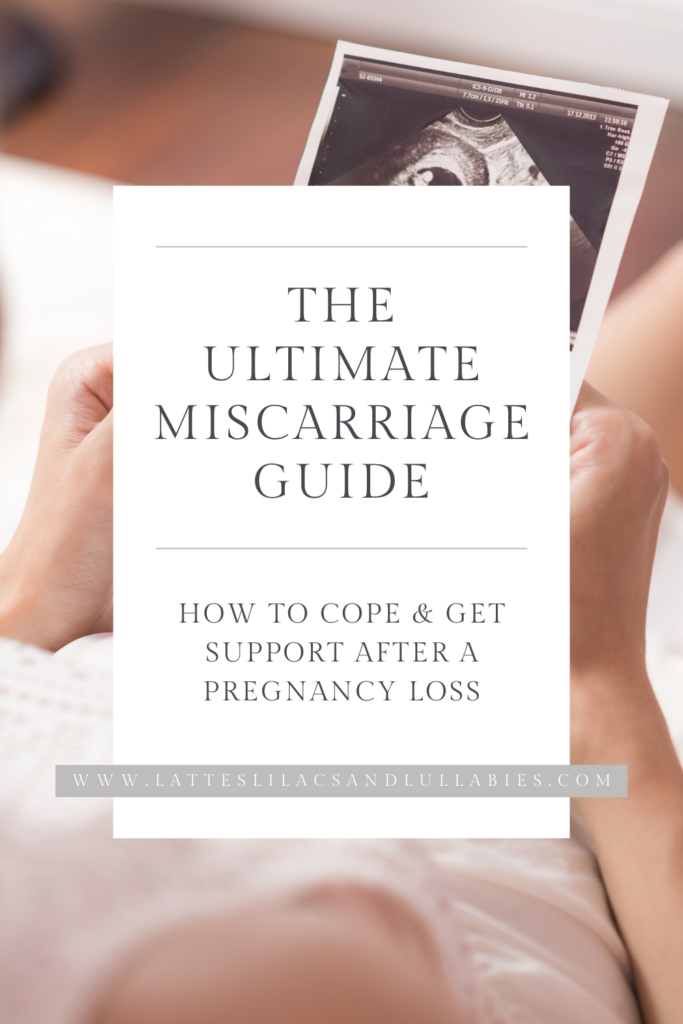
Coping and Finding Support
Coping with the emotional and physical aspects of a miscarriage can be an incredibly challenging journey. Fortunately, there are various ways to find support and navigate the grieving process. Here are some examples of how to find support and cope after a miscarriage:
1. Seek Professional Help:
- Therapy or Counseling: A mental health professional, such as a therapist or counselor, can provide a safe space to express your feelings, fears, and frustrations. They can offer strategies for coping with grief and provide emotional support.
- Grief Support Specialist: Some therapists specialize in grief and loss and can offer specialized support tailored to your needs.
2. Lean on Loved Ones:
- Family and Friends: Share your feelings with family and friends who are understanding and supportive. Let them know how they can best provide assistance, whether it’s a listening ear, help with daily tasks, or simply spending time with you.
- Partner: Communicate with your partner about your emotions, as they are likely going through their grieving process as well. Open and honest dialogue can help you navigate this challenging time together.
3. Support Groups:
- Miscarriage Support Groups: Many local and online support groups bring together individuals who have experienced pregnancy loss. These communities provide a safe space to share your experiences and find solace in the stories of others.
- Pregnancy Loss Organizations: Organizations like the March of Dimes, the MISS Foundation, and Share Pregnancy and Infant Loss Support offer resources, forums, and local support groups for those dealing with pregnancy loss.
4. Self-Care:
- Take Time for Yourself: Allow yourself moments of solitude for self-reflection, self-care, and healing. Engage in activities that bring you comfort and relaxation.
- Journaling: Keeping a journal can be a therapeutic way to process your emotions, record your journey, and reflect on your feelings as you move through the stages of grief.
5. Supportive Resources:
- Books: Many books are available on the subject of pregnancy loss and grief. Reading personal stories and expert advice can help you feel less alone.
- Online Communities: Online forums and social media groups dedicated to pregnancy loss are spaces where you can connect with others who have experienced similar situations.
6. Memorialize Your Loss:
- Create a Memorial: Some individuals find comfort in creating a memorial or a special remembrance for the baby they lost. This can be in the form of planting a tree, dedicating a piece of art, or participating in a memorial service.
7. Be Patient with Yourself:
- Recognize the Process: Grief is a unique journey for each person. You may go through stages such as denial, anger, bargaining, depression, and acceptance. Understand that healing takes time and that it is okay to experience these emotions.
- Seek Medical Clearance: If you are planning to try for another pregnancy, consult with your healthcare provider to ensure your body has healed physically and you are emotionally ready.
8. Know When to Seek Professional Help:
- Persistent Grief: If your grief persists and affects your daily life, it’s essential to seek help from a mental health professional.
- Depression and Anxiety: If you experience signs of depression or anxiety, such as loss of appetite, sleep disturbances, or thoughts of self-harm, reach out for immediate assistance.
Remember that finding support and coping after a miscarriage is a highly personal process. Seek the methods that resonate with you and provide the comfort and healing you need. It’s okay to grieve, and there are resources and people available to help you navigate this challenging journey with care and understanding.

Conclusion: Navigating the Storm with Empathy
The stages of miscarriage are a poignant part of many women’s lives, and it’s vital to approach this topic with sensitivity and understanding. Whether you’re in the midst of a miscarriage or supporting someone who is, remember that you’re not alone. Seek medical advice, find emotional support, and allow yourself the time to heal. Miscarriage is a part of the journey, but it does not define the entire path to motherhood. With knowledge, empathy, and support, you can navigate the uncharted waters of pregnancy loss.
Miscarriage is a topic that needs more awareness and understanding. By sharing this information, we hope to shed light on the various aspects of this journey and provide comfort to those who may be going through it. Remember, you’re not alone, and there is a community of support waiting to help you through this challenging time.
More Posts You’ll Love…
- Miscarriage: What To Expect During A Pregnancy Loss
- The Best Miscarriage Gifts for Mom & Dad
- Life After Loss: Our Visit To The Pregnancy Loss Clinic
- Life After Loss: How To Survive The Holidays
- How To Support A Couple Going Through A Miscarriage
- Coping with Miscarriage & Loss: The Story of Our Angel Baby
- The Story of Our Second Miscarriage: Our Rainbow Baby












